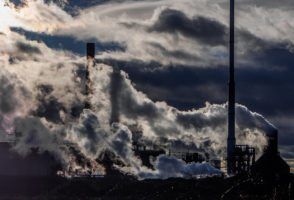

Environment
Tech Transformation Needed By Steel Companies For Emissions Regulations
A new report, has found the steel industry needs to reduce its emissions by over 70% by 2050 in order to meet Paris Agreement objectives. The analysis covered a US$121bn grouping of the world’s largest steel companies.
However, that progress on research and development (R&D) in emerging decarbonisation technologies is limited and at early stages.
With low industry profitability, R&D expenses have been cut by 14% in US$ terms in recent years and there are no commercially available technologies today which can achieve these targets. The threat to the industry is urgent as over 70% of world steel production will be subject to a carbon price by the end of 2017.
The report from CDP – voted no. 1 climate change research provider by institutional investors and winner of Investment Week’s Best SRI Research 2016 – reveals that there has been no industry-wide progress in improving emissions and energy efficiency levels in a decade with all emissions reduction targets set to expire by 2020. The steel industry is responsible for 6-7% of global emissions, yet the report finds that of the 14 global steel companies analysed, over 40% (six) have not published any emissions reduction targets beyond 2016.
Drew Fryer, Senior Analyst, Investor Research at CDP said:
The steel industry will have to play a huge part in achieving the 2-degree scenario laid out in the Paris Agreement.
“However, there has been no progress in reducing its emissions over the past decade. Steelmakers need to prioritise funding of a technology transformation to reduce emissions in order to ensure targets are met. In particular, progress has been too slow to realise the potential of carbon capture and storage (CCS), with no pilot projects underway in the steel industry.”
Today’s report benchmarks leading steel companies on their management of climate issues finding South Korean firms POSCO and Hyundai Steel among the best performing, with Tata Steel and US Steel ranking lowest among those who disclose.
CDP’s summary League Table for steel companies shows:

Other findings from the report include:
Over 70% of world steel production will be subject to a carbon price by end 2017, including from emissions trading schemes, carbon taxes or climate-focused coal taxes. Without success in realising the potential of breakthrough low emissions technologies, steelmakers could face a continuously rising burden of carbon permit obligations;
The industry’s progress in reducing emissions is inconsistent. More companies increased their emissions intensities than reduced them in the past seven years, with no industry-wide progress to improve energy efficiency in a decade;
Only eight companies in the report have outlined emissions reduction targets. All those will expire by 2020. Six out of 14 companies in our sample have not published any forward looking targets, or have targets that expire in 2016;
By 2030, 20% of sites assessed are projected to be in high water risk areas and 8% in extremely high risk areas. This could cause future business interruption exacerbated by climate change;
China makes up 50% of global steelmaking production but is not providing investors with the carbon-related disclosures they require to assess individual company risk and preparedness, and make informed investment decisions;
The steel industry is generally supportive of carbon regulation but has obstructed it in practice, arguing it could create inconsistencies between regions with and without carbon prices. However, debate between industry and regulators over ‘carbon leakage’ could enter a new phase as more countries introduce carbon prices including China;
Wuhan Iron and Steel, Nucor Corporation, Novolipetsk Steel OJSC, Steel Authority of India, Inner Mongolian Baotou Steel Union and SeverStal PAO which collectively represent over US$60 billion in market capitalisation, did not respond to CDP’s 2016 climate change questionnaire and are therefore not included in this report. Investors should ask these companies why they are not providing transparency on their carbon emissions.
You can view the executive summary of the report here.


 Environment10 months ago
Environment10 months agoAre Polymer Banknotes: an Eco-Friendly Trend or a Groundswell?

 Environment11 months ago
Environment11 months agoEco-Friendly Home Improvements: Top 7 Upgrades for 2025

 Features9 months ago
Features9 months agoEco-Friendly Cryptocurrencies: Sustainable Investment Choices

 Features10 months ago
Features10 months agoEco-Friendly Crypto Traders Must Find the Right Exchange





























